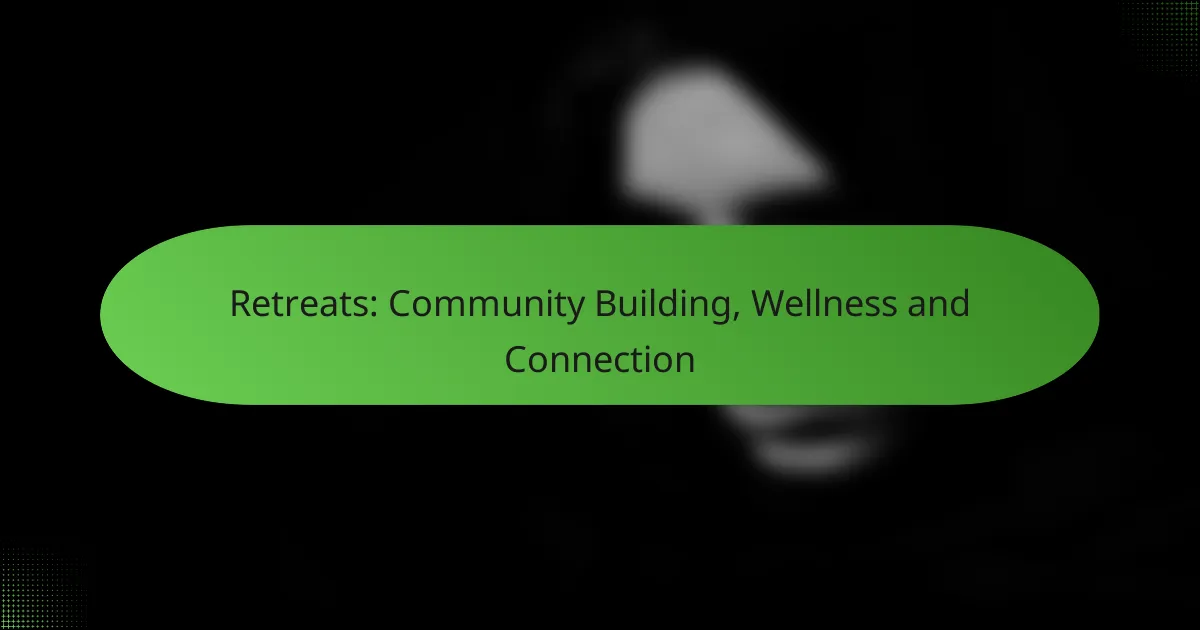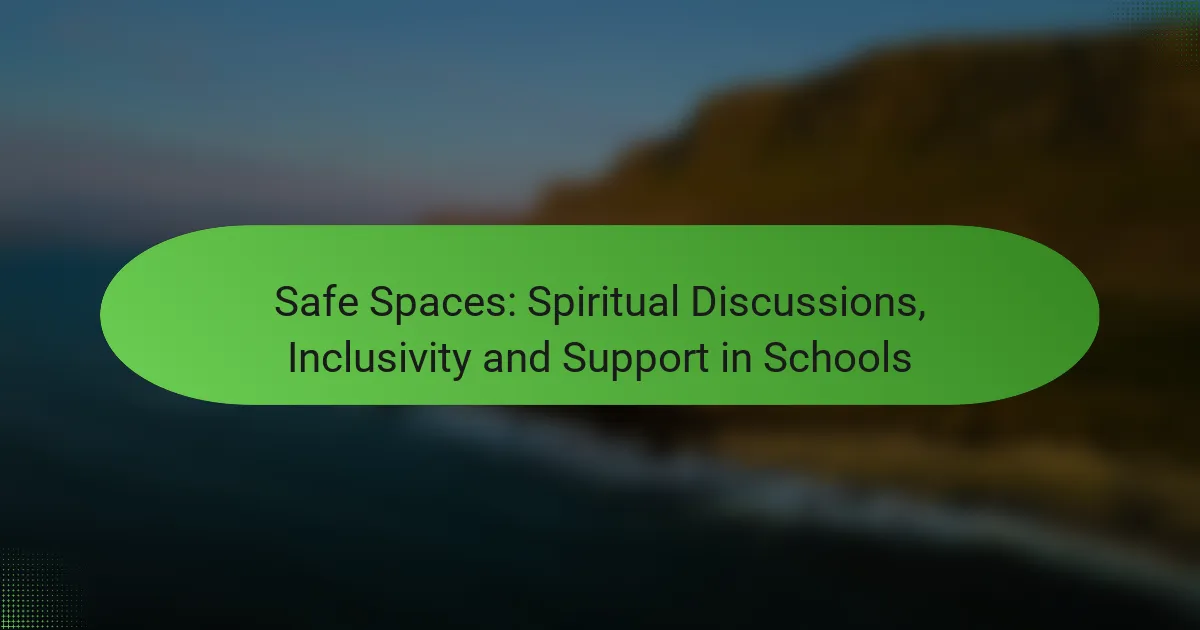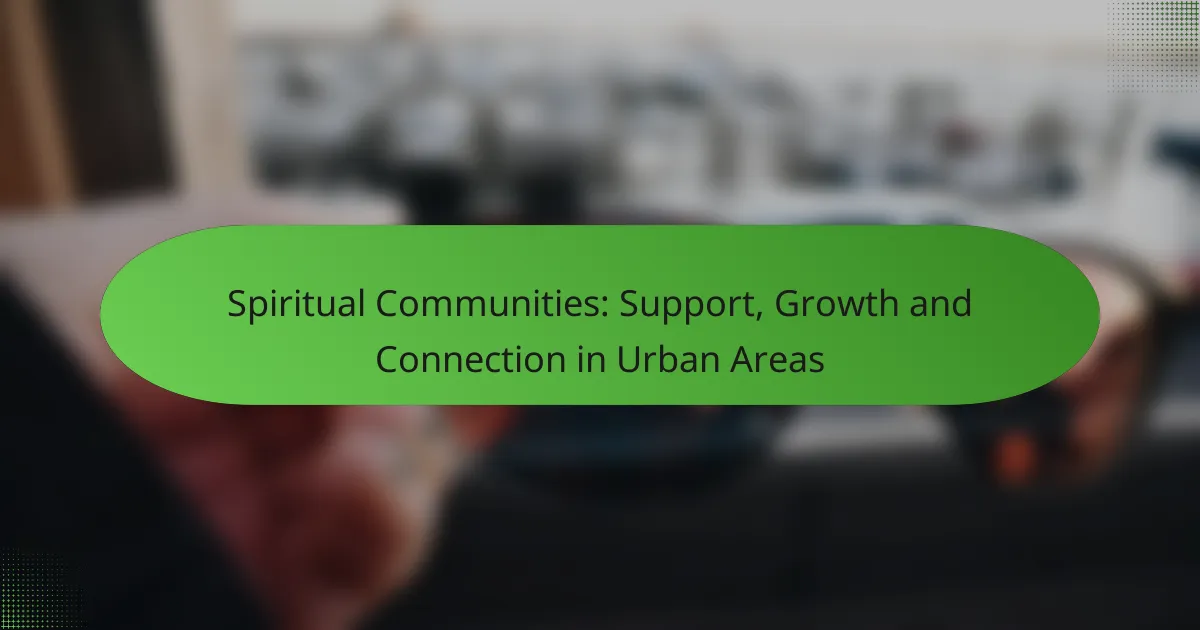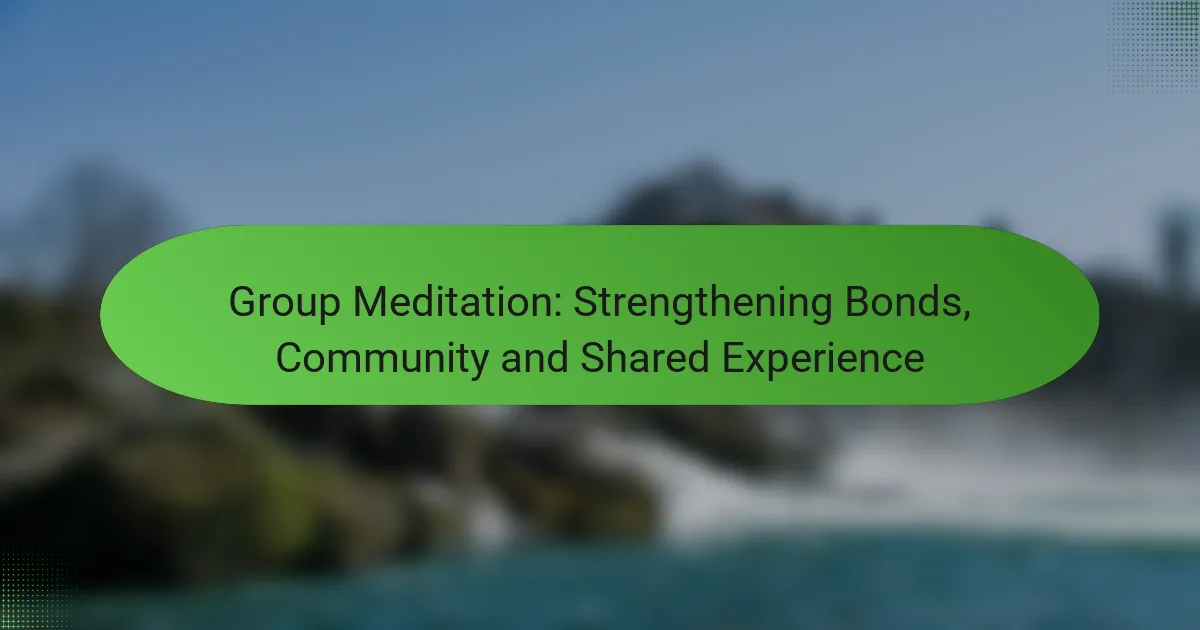Retreats offer a unique opportunity for community building, allowing individuals to connect through shared experiences and intentional activities. These immersive environments promote wellness by enhancing physical, mental, and emotional health, while also fostering meaningful relationships and a sense of belonging. Selecting the right retreat involves assessing personal goals, researching facilitators, and evaluating program structures to ensure a fulfilling experience.
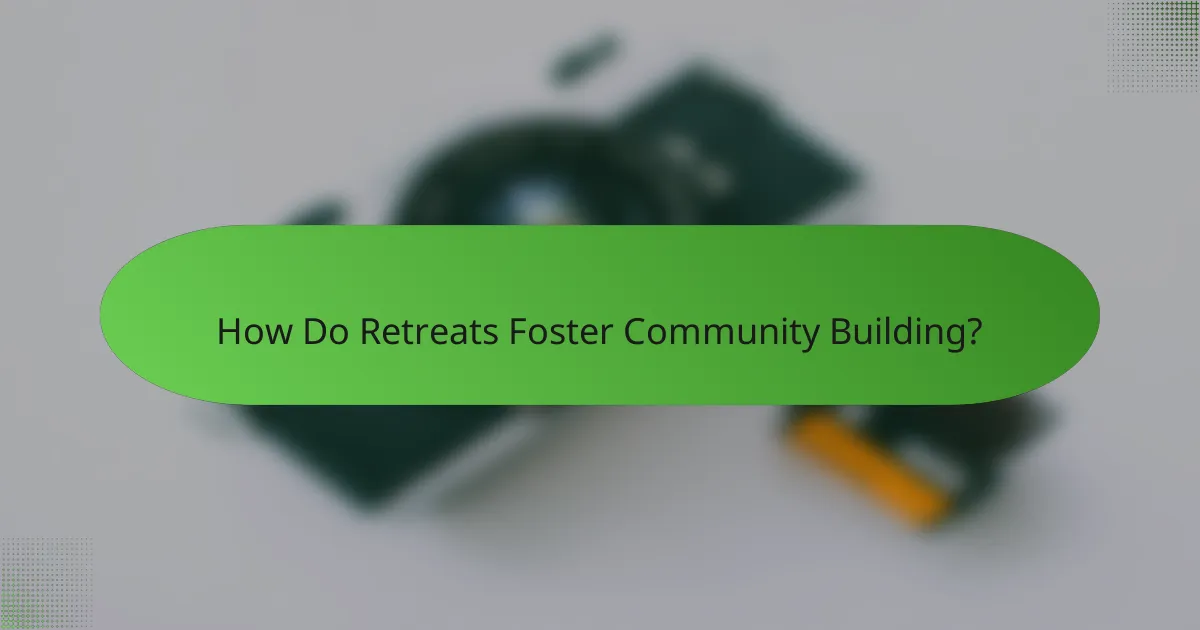
How Do Retreats Foster Community Building?
Retreats foster community building by creating environments where individuals can connect deeply through shared experiences and intentional activities. These settings encourage participants to form meaningful relationships, enhancing their sense of belonging and support.
Shared experiences create bonds
Shared experiences during retreats, such as group hikes, workshops, or meditation sessions, help participants connect on a personal level. Engaging in activities together allows individuals to share their thoughts and feelings, fostering empathy and understanding.
For example, a group cooking class can lead to conversations about cultural backgrounds and personal stories, which strengthens interpersonal connections. These moments often lead to lasting friendships that extend beyond the retreat.
Group activities enhance connections
Group activities, such as team-building exercises or collaborative projects, are essential for enhancing connections among participants. These activities encourage teamwork and communication, allowing individuals to discover shared interests and values.
Consider incorporating activities like trust falls or problem-solving challenges, which require participants to rely on each other. This reliance builds camaraderie and can lead to a supportive network that persists after the retreat.
Facilitated discussions promote trust
Facilitated discussions during retreats create safe spaces for open dialogue, which is crucial for building trust. Skilled facilitators guide conversations that encourage vulnerability and honesty, allowing participants to express their thoughts and feelings without judgment.
Implementing structured sharing circles or guided reflections can help participants articulate their experiences and listen to others. This practice fosters a sense of community and mutual respect, essential for long-term relationships.
Long-term relationships through follow-ups
Long-term relationships can be cultivated through follow-up activities after the retreat. Organizing regular check-ins, online meet-ups, or social media groups helps maintain connections formed during the retreat.
Consider setting up a monthly virtual gathering or a dedicated online platform where participants can share updates and support each other. These efforts can transform initial bonds into lasting friendships, enhancing the overall impact of the retreat experience.

What Wellness Benefits Do Retreats Offer?
Retreats provide a range of wellness benefits that enhance physical, mental, and emotional health. Participants often experience reduced stress, improved mindfulness, better physical health, and opportunities for emotional healing.
Stress reduction techniques
Retreats often incorporate various stress reduction techniques that help participants unwind and recharge. Activities such as yoga, deep breathing exercises, and guided relaxation sessions can significantly lower stress levels. Engaging in nature walks or quiet reflection can further enhance this calming effect.
To maximize stress relief, consider retreats that offer personalized programs tailored to individual needs. Look for options that include group support, as sharing experiences can foster a sense of community and connection.
Mindfulness and meditation practices
Many retreats focus on mindfulness and meditation practices that cultivate present-moment awareness. Techniques such as guided meditation, body scans, and mindful eating encourage participants to connect with their thoughts and feelings. These practices can lead to greater emotional regulation and clarity.
When selecting a retreat, check if they provide instruction in various meditation styles, such as transcendental meditation or mindfulness-based stress reduction. This variety allows participants to find the approach that resonates best with them.
Physical health improvements
Retreats often promote physical health improvements through structured activities like fitness classes, healthy meal plans, and wellness workshops. Engaging in regular physical activity during a retreat can enhance cardiovascular health and boost energy levels. Nutritious meals typically offered can also support overall well-being.
To benefit physically, choose retreats that emphasize holistic health, integrating fitness with nutrition and relaxation. Look for programs that provide expert guidance on maintaining these healthy habits post-retreat.
Emotional healing opportunities
Retreats can serve as powerful environments for emotional healing, offering workshops and activities designed to address personal challenges. Group therapy sessions, journaling, and creative expression can facilitate deep emotional exploration and healing. Participants often leave with renewed perspectives and coping strategies.
When considering a retreat for emotional healing, seek those that provide professional facilitators or therapists. This ensures a safe space for sharing and growth, maximizing the potential for meaningful transformation.

How to Choose the Right Retreat?
Choosing the right retreat involves understanding your personal goals and needs, researching facilitators, considering location, and evaluating the program structure. These factors will help ensure that the retreat aligns with your expectations and provides a fulfilling experience.
Identify personal goals and needs
Start by clarifying what you hope to achieve from the retreat. Are you looking for relaxation, personal growth, or community connection? Defining your objectives will guide your selection process.
Consider your emotional and physical needs as well. For example, if you seek stress relief, a wellness retreat focusing on mindfulness and meditation may be ideal. Alternatively, if you want to build social connections, look for retreats that emphasize group activities.
Research facilitators and their credentials
The facilitators play a crucial role in the quality of your retreat experience. Investigate their backgrounds, training, and experience in leading retreats. Look for reviews or testimonials from past participants to gauge their effectiveness.
Ensure that the facilitators have relevant certifications, especially in areas like mental health, yoga, or wellness coaching. This will help you feel more confident in their ability to guide you through your retreat experience.
Consider location and accessibility
Location significantly impacts your retreat experience. Choose a setting that resonates with you, whether it’s a serene forest, a beachside resort, or a mountain lodge. The environment should enhance your goals, such as relaxation or adventure.
Accessibility is also important. Consider travel time, transportation options, and any potential visa requirements if the retreat is abroad. A retreat that is easy to reach can reduce stress and allow you to focus on your experience.
Evaluate program structure and activities
Review the retreat’s schedule to understand the program structure and activities offered. Look for a balance between structured sessions and free time, allowing for personal reflection and relaxation.
Check if the activities align with your interests and goals. For instance, if you want to deepen your yoga practice, ensure that the retreat includes ample yoga sessions led by qualified instructors. A well-rounded program will enhance your overall experience.

What Are Popular Retreat Locations in the US?
Popular retreat locations in the US include areas known for their natural beauty, wellness offerings, and community-building experiences. These locations often provide a range of activities focused on relaxation, personal growth, and connection with others.
California wellness retreats
California is renowned for its diverse wellness retreats, offering everything from yoga and meditation to spa treatments and organic cuisine. Locations like Joshua Tree and Big Sur provide stunning backdrops that enhance the healing experience.
When choosing a California wellness retreat, consider factors such as the type of programs offered, accommodation styles, and proximity to nature. Many retreats also incorporate local health practices and organic food, which can enrich your experience.
Florida beach retreats
Florida beach retreats are ideal for those seeking relaxation by the ocean. Destinations like Miami and the Florida Keys offer retreats that combine beach activities with wellness programs, such as yoga on the sand or guided meditation sessions at sunrise.
Look for retreats that provide a balance of structured activities and free time to explore the beach. Many retreats also offer wellness workshops focused on nutrition and mental health, making them a holistic choice for rejuvenation.
Colorado nature retreats
Colorado is famous for its breathtaking mountain landscapes, making it a perfect setting for nature retreats. Locations like Estes Park and Boulder focus on outdoor activities such as hiking, skiing, and mindfulness in nature.
When selecting a Colorado nature retreat, consider the season and the types of outdoor activities available. Many retreats emphasize a connection to the environment, offering workshops on sustainability and personal growth amidst the stunning scenery.
